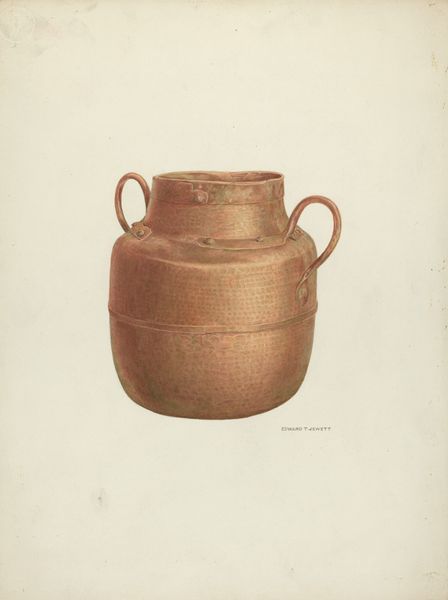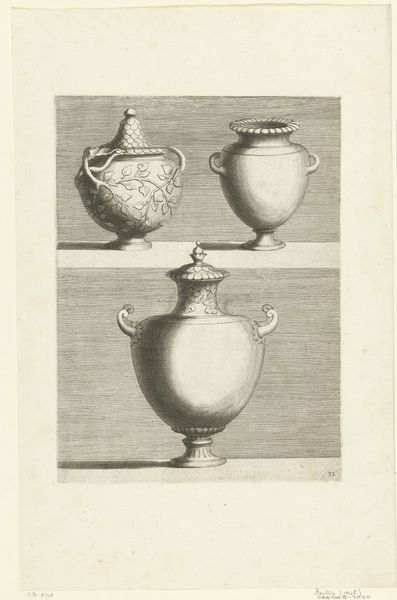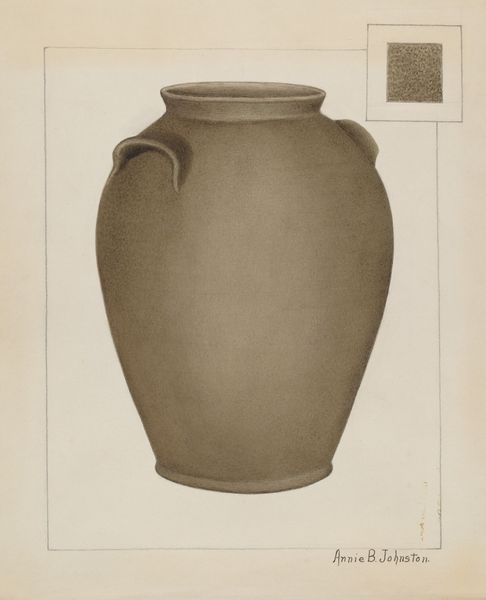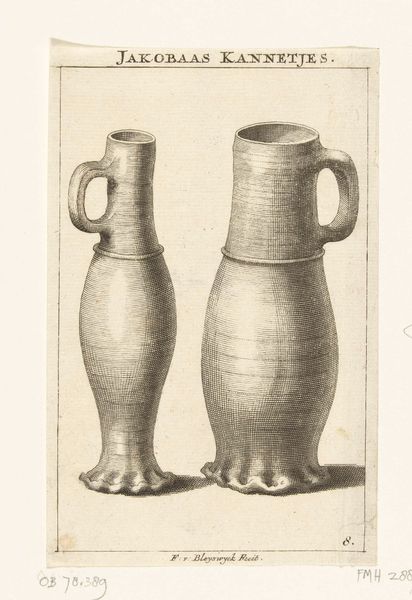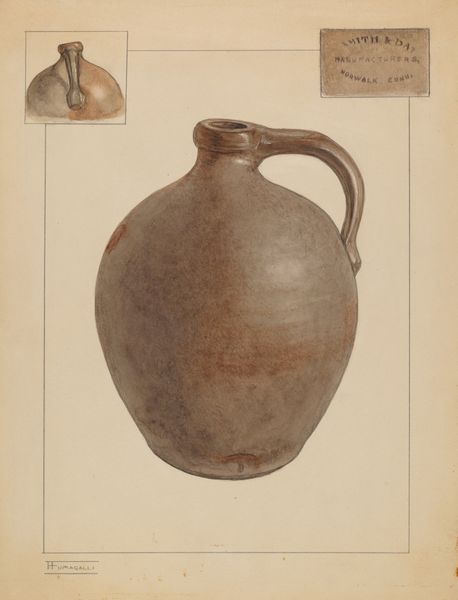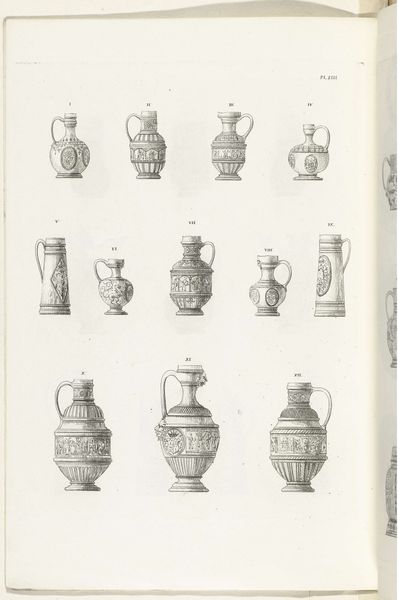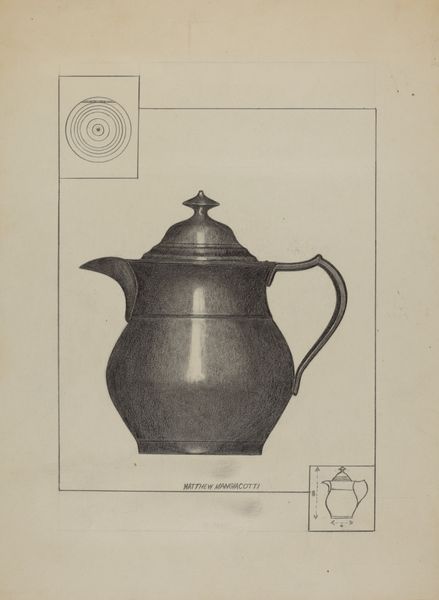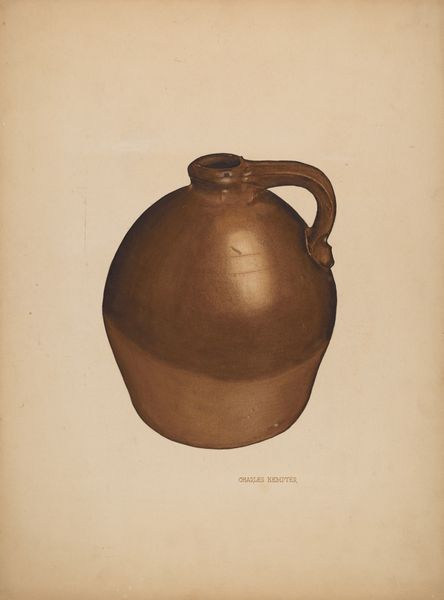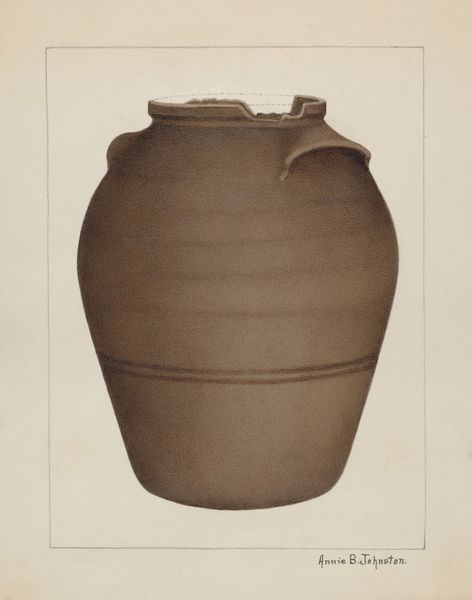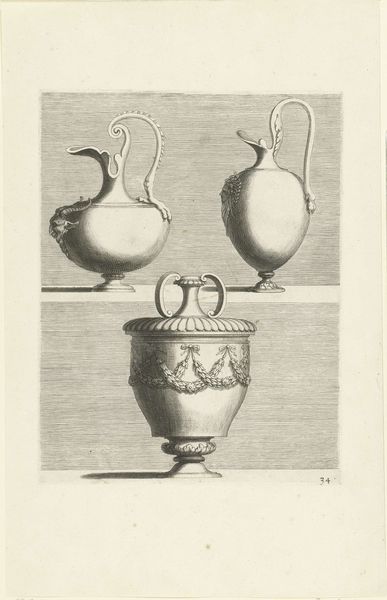
drawing, print, glass, pencil, graphite
#
pencil drawn
#
drawing
# print
#
pencil sketch
#
glass
#
romanesque
#
pencil drawing
#
ancient-mediterranean
#
pencil
#
graphite
#
graphite
Dimensions: height 370 mm, width 270 mm
Copyright: Rijks Museum: Open Domain
Editor: This is a graphite drawing called "Pots from a Roman Grave," dating from around 1862 to 1887, by Andries van den Berg. There's something hauntingly still about it, the pots feel like remnants, holding untold stories. What do you see in this piece, considering it's a depiction of objects found in a grave? Curator: The still life of these pots transcend their initial function; they become vessels of memory themselves. Consider the shapes – round, contained. The circle is a potent symbol, referencing cycles of life, death, and rebirth that span centuries. We are witnessing containers, from a sepulcher: they held offerings for the deceased, embodying hope for continuity. Editor: So, the form itself speaks to the rituals around death? Curator: Precisely. The deliberate crafting of each pot—some intact, some fragmented—further signifies the delicate balance between remembrance and decay, presence and absence. Even the varying sizes likely carried distinct cultural meanings concerning social hierarchy or personalized offerings. What resonates most powerfully is their arrangement as an ensemble – a collective, symbolic memory for the community and family linked to this sepulcher. Editor: I hadn't considered how the arrangement contributes to the overall symbolism. Now I am wondering how the graphite medium impacts the piece as a whole. Curator: The grey, almost ghostly, monochrome serves to enhance the elegiac mood. Graphite, reminiscent of ash, cleverly mimics the physical remnants of the deceased, linking medium to subject. The pots exist now in an entirely new symbolic register thanks to the artist and the image that we have today. Does this drawing suggest what Roman funerary practices meant? Editor: Definitely, especially emphasizing symbolic links. Seeing how potent the connections are between visual symbolism, funerary tradition, and human memory is deeply moving. Curator: Indeed, the artist makes a poignant meditation through this drawing about remembrance and its cultural significance across time.
Comments
No comments
Be the first to comment and join the conversation on the ultimate creative platform.
